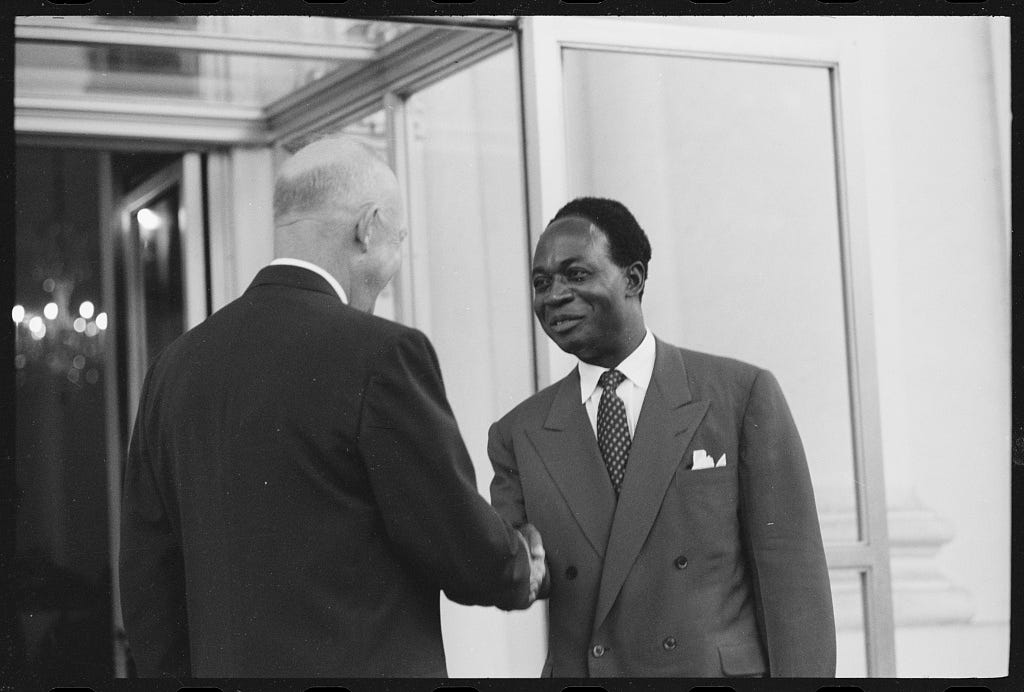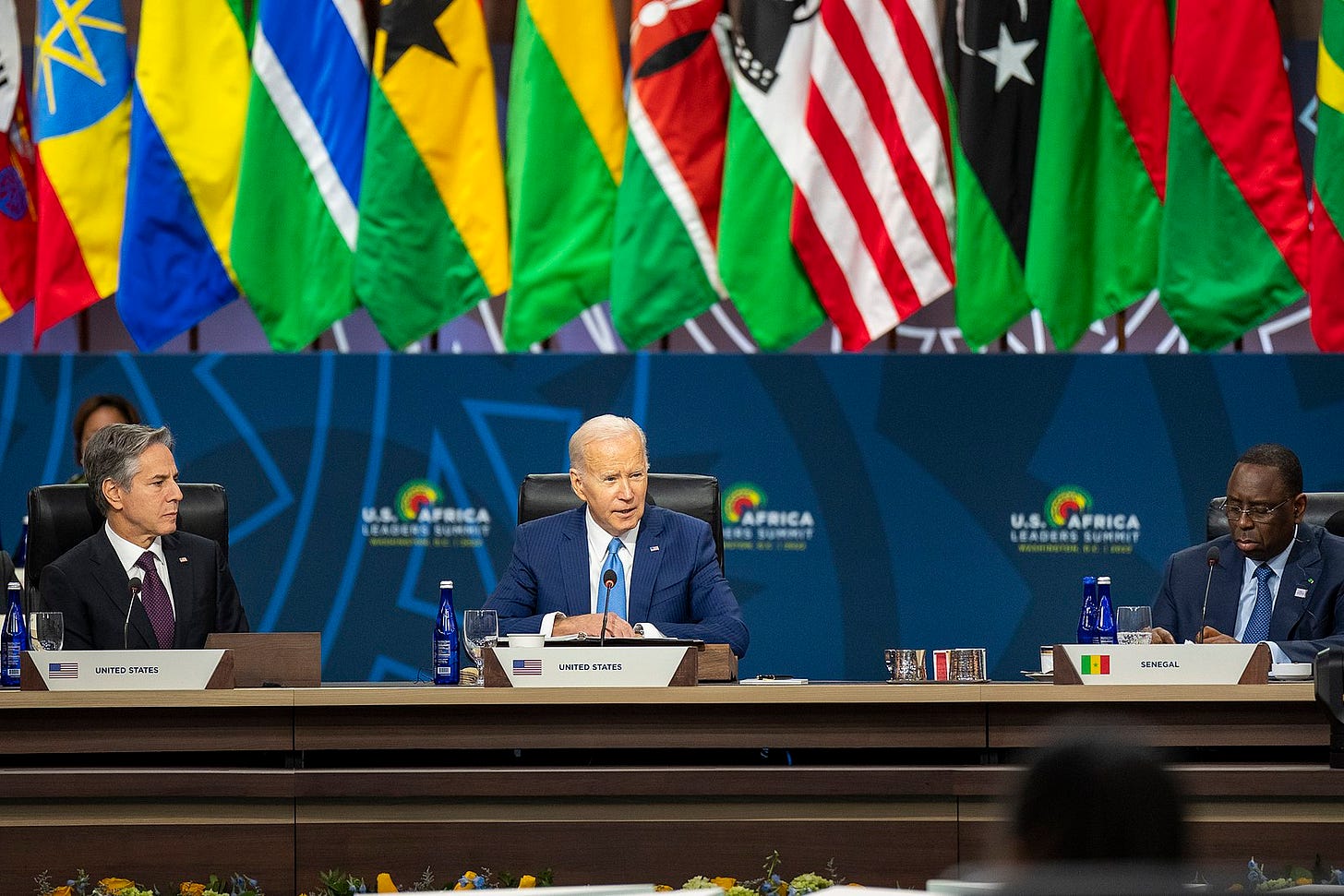On Strategies
I wrote President Biden's Africa Strategy. What went wrong?
Let me start with a confession: I really dislike strategies. Or, more specifically, I really dislike the way we write and present strategies.
Trust me, I have a lot of firsthand experience in this department. I have written country and regional strategies, contributed to President Obama’s U.S. Strategy Toward Sub-Saharan Africa (2012), and served as the primary author of President Biden’s U.S. Strategy Toward Sub-Saharan Africa (2022).
Getting it Wrong
What’s my problem? Well, for starters, we usually don’t know what we want out of a strategy and what we are really trying to achieve by crafting it in the first place.
We rarely start with a shared understanding of why we are writing a strategy or the rationale behind publicly releasing one. A strategy can be a lot of things—a statement of priorities, a directive to the U.S. interagency, or a tool of public diplomacy. It is difficult, if not impossible, to do all three well.
We fail to appreciate that a strategy can come in all shapes and sizes. A handful of administrations publicly released their Africa strategies (Obama, Biden) or simply delivered a speech (Johnson, Trump). Some presidencies kept them entirely classified (Eisenhower, Bush 41), while others skipped the exercise completely (Kennedy, Bush 43).
We tend to populate strategies with meaningless bromides. Almost every strategic document or speech opens with some variation of “the potential of Africa is great, but so are its problems,” just as President Nixon did in his report to Congress in 1972. These strategies, especially the public ones, often dress up U.S. values as objectives. Democracy, peace and security, development, trade and investment are all admirable but rarely well-defined, concrete, or assessable.
Most importantly, we often avoid including anything truly “strategic.” These documents aren’t roadmaps to achieve our goals. They usually don’t follow the “ends, ways, and means” construction favored by U.S. military planners. In general, they represent a laundry list of programs and pet rocks insisted on by bureaucrats and consonant with the political winds of the moment.
Getting it Right
My mantra for this newsletter is thinking out loud about U.S. policy toward Africa. So, I dug up a bunch of declassified strategies and memos, as well as historical policy speeches, to work through a checklist for formulating strategies.
Purpose. This is the most important consideration: what is the point? When you factor in all the consultations, interagency meetings, and hours it takes to put pen to paper, you should really know why you are doing all of this.
Some strategies seem to be more about putting an administration stamp on a policy than defining a different approach. During the George H.W. Bush administration, the Africa strategy was distributed to the interagency in December 1992 because, as National Security Advisor Brent Scowcroft explained to the President, “we will note in the transmittal to agencies that the study was completed before the election, and that this directive is being issued at this time in order to complete the cycle of action on this subject.”
The Eisenhower Administration’s U.S. Policy Toward Africa South of the Sahara Prior to Calendar Year 1960 (NSC 5818), by contrast, is easily understood as policy guidance anticipating the emergence of independent African nations. It directed departments and agencies to support and encourage “constructive nationalism and reform movements in colonial areas in Africa, when convinced they are likely to become powerful and grow in influence; while publicly acknowledging steps taken by Western European powers toward indigenous self-government.”

Ambition. Related to purpose, a strategy should have ambition. This doesn’t necessarily mean doing more, but it does implies breaking with the past and doing things differently.
If you aren’t changing the policy in demonstrative ways, what’s the rationale for writing a strategy at all? There is nothing inherently wrong with continuing with the status quo—just don’t waste everyone’s time by suggesting you are embarking on something new. (To be clear, I believe that every administration should test its assumptions and deliberate on whether it is necessary to reconfigure its policy toward the region — but that is a different exercise.)
During the LBJ administration, U.S. ambassadors gathered in Lagos and Addis Ababa to mull a “Johnson Doctrine” for Africa in 1965. The consensus was that there were few “significant, new or imaginative ideas around which a ‘New Policy for Africa’ could be built,” according to an NSC memo. While the diplomats recommended the term “strengthened” instead of “new” to affix to the policy, the NSC staffer thought that even “strengthened” was an overstatement. Johnson ended up delivering a weak speech a year later without much fanfare.

Succinct. One of the more pernicious problems with these documents is their length. The Biden strategy was 16 pages long, and the Eisenhower policy was 31 inclusive of five appendices. The impetus to be comprehensive is understandable, but the result tends to be an overstuffed turkey. Everyone shoves in their programs, projects, and policies, resulting in atrociously long sections, paragraphs, and sentences.
These interminable strategies often have little coherence or focus. Their length makes it difficult to discern what they are all about, rendering them less effective as a policy directive or public diplomacy tool. Usually, drafters (myself included) have leaned on a set of objectives to provide some structure and intellectual rigor, but most of these strategic objectives or pillars tend to be anodyne and predictable. Accordingly, they have functioned more as listicles than policy guidance; the Obama strategy had four objectives with 21 sub-objectives.
It is far better to be brief and memorable than long and forgettable. A good strategy is sticky—it conveys a principal theme, message, or overarching position. President Trump’s first term Africa strategy passed this test. The administration’s strategy was about countering China. Then-National Security Advisor John Bolton’s speech, accordingly, is most remembered for referencing China 17 times.

Support. The final marker of a sound strategy is whether it has presidential support. It is not enough to have received interagency sign-off or to be announced by a secretary of state or national security advisor. It needs to have the president behind it and, eventually, the resources to fund it.
If you have an administration where the political leadership wants you to keep African issues “off their desk,” you might as well save yourself some time and forget writing a strategy. You want the president, vice president, and cabinet to sing from the same sheet of music and to be ready to roll up their sleeves when called upon.
During the Biden Administration, the strategy shifted U.S. rhetoric about Africa. Its ideas framed the U.S.-Africa Leaders Summit in 2022 and almost 30 trips to the continent by senior leaders, including the president’s visit to Angola in December 2024. We had message discipline, but it proved more challenging to meet the strategy’s ambition with commensurate resources as well as consistent senior-level time and attention.
Oh, and Don’t Call it a Strategy
My hottest take is that we should stop calling these strategies all together. Almost none of the Africa strategies—or the National Security Strategy and National Defense Strategy, for that matter—sketch out how we will achieve such lofty goals. They aren’t action plans, they are conceptual frameworks. They introduce ideas, but they are quiet about tactics. I think we’re better off calling them mission statements.
A strategy should be about advancing concrete outcomes, chiefly by detailing how a specific sequence of steps contributes to a strategic goal. If you want to know what I’m talking about, pick up a copy of Chet Crocker’s High Noon in Southern Africa. President Reagan’s former assistant secretary of state recounts how he developed and executed a policy that linked Cuban withdrawal from Angola with Namibian independence. That was a real strategy – a well-considered, carefully calibrated plan to produce a specific outcome.

Post Strategy
My final thought on strategies is only write them if you truly have something to say. It should preview a different approach while resisting the bureaucratic temptation to opine on everything. Make it short and memorable—more about showcasing the principles underpinning your policies than presenting bland, cookie-cutter objectives. And don’t dare waste people’s time if you don’t have political buy-in.
After all, having a strategy is not synonymous with having a successful policy toward Africa. Indeed, Presidents Kennedy and Bush (43), in my opinion, had the most impactful records and neither penned a strategy. What matters most is how and why the United States engages—a topic that we will cover in the next series of posts.



“After all, having a strategy is not synonymous with having a successful policy toward Africa. Indeed, Presidents Kennedy and Bush (43), in my opinion, had the most impactful records and neither penned a strategy.”
I’d agree with this and go one step further. A lack of a convoluted strategy probably helped. Perhaps their impact was due, at least in part, to their willingness and ability to just take action, which might have been more difficult if they were mired in a multi-page strategy. Better to have your actions set a tone and a course than to have a booklet of sub-actions. You can’t be good at three things if you’re focused on thirty.
My view: if you have a strategy, make it fit on a single page.
Fun combination of history and prescription. I’ll be hanging around this Substack for sure.